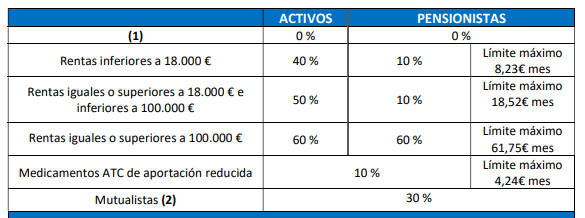Medication in Spain: A Guide for Foreigners
Spain is well known for its excellent healthcare system, but many foreigners are surprised to learn how the medication system works. Whether you rely on the public healthcare network or prefer private insurance, understanding how prescriptions, pharmacy access, and costs operate in Spain will help you manage your health with confidence.
In this guide, we’ll cover how medications are prescribed, what you can expect to pay, and the differences between public and private healthcare access.
Pharmacies in Spain
Pharmacies in Spain, called farmacias, are highly regulated and easy to find. They are marked by a green cross, often illuminated, and are found in nearly every neighborhood. Unlike in some countries where medications may be available in supermarkets, in Spain most medicines — even common ones — are sold only through pharmacies.
Spanish pharmacists are well trained and can provide advice on minor ailments, over-the-counter medications, and how to take prescribed drugs. Some pharmacies operate 24/7 in larger cities, while smaller towns rotate emergency coverage to ensure access at all times.
Prescriptions in Public Healthcare
If you are registered with the public healthcare system and have a Spanish health card (Tarjeta Sanitaria Individual), your doctor will issue prescriptions electronically. This means you do not need a paper prescription; instead, your card is scanned at the pharmacy, and the medication details appear automatically.
One of the main benefits of the public system is the co-payment model. Instead of paying full price for medications, patients contribute a percentage of the cost, with the remainder covered by the government. The exact amount depends on income level and status:
- Low-income patients and pensioners often pay only 10%.
- General working-age adults pay between 40–50%.
- High-income earners may pay up to 60%.
There is also a monthly cap for pensioners, meaning their out-of-pocket expenses remain manageable. Here you can see the official table.
Key Explanations:
| Group / Income Bracket | Working-Age Population | Pensioners | Monthly Cap (per medication) |
|---|---|---|---|
| (1) Protected Groups (e.g., low-income, severe disability) | 0% | 0% | No cost |
| Incomes under €18,000 | 40% | 10% | Max €8.23 / month |
| Incomes equal to or over €18,000 but under €100,000 | 50% | 10% | Max €18.52 / month |
| Incomes equal to or over €100,000 | 60% | 60% | Max €61.75 / month |
| Medications with reduced co-payment (Certain ATC codes) | 10% | 10% | Max €4.24 / month |
| Members of Mutual Insurance Societies (2) | 30% |
- Activos (Working-Age Population): This refers to people of working age who are covered by the public system (e.g., through employment or the Convenio Especial).
- Pensionistas (Pensioners): Individuals receiving a state pension.
- (1) Protected Groups: This typically includes people with very low incomes, those receiving certain benefits, individuals with severe disabilities, and victims of terrorism. They pay nothing for prescriptions.
- Monthly Cap: This is the maximum amount you will pay per medication per month. If the 40% share of a drug’s cost is €15, you will only pay the capped amount of €8.23.
- ATC of reducida (Reduced Co-payment Medications): These are medications for chronic or serious conditions (e.g., diabetes, hypertension). They have a much lower copayment rate and a lower monthly cap.
- Mutualistas: This refers to members of certain mutual insurance societies (like MUGEJU or ISFAS for military personnel), who have their own specific copayment rules.
In short, the amount you pay for medication in Spain’s public system depends on your employment status, your annual income, and the type of medication prescribed.
Private Healthcare and Medications
If you use private healthcare in Spain, the process works differently. Private doctors can issue prescriptions, but these are not linked to the public system’s electronic records. In most cases, private prescriptions are paid in full at the pharmacy.
That said, many private insurance plans include partial reimbursement for medication costs. Typically, you will need to pay upfront at the pharmacy and then submit receipts to your insurance provider for reimbursement, depending on your policy.
Private healthcare also often provides faster access to specialists, which can be important if you require ongoing or complex medication management. However, the financial advantage of subsidized prescriptions usually comes only through the public system.
Over-the-Counter Medications
Many medicines that are prescription-only in other countries are available over the counter in Spain. Examples include:
- Basic painkillers like ibuprofen and paracetamol.
- Anti-inflammatory creams.
- Some cold and flu remedies.
However, antibiotics are strictly controlled and always require a prescription. This regulation helps Spain combat antibiotic resistance and ensures responsible use.
Brand Names vs. Generic Medications
Spain strongly encourages the use of generic medicines (medicamentos genéricos), which are equivalent in effectiveness and safety to brand-name drugs but cost less. Pharmacists will usually dispense the generic version unless specifically instructed otherwise by your doctor.
For foreigners, this sometimes causes confusion because the drug names may differ from what you are used to in your home country. Pharmacists can help by checking the active ingredient and confirming the equivalent Spanish medication.
Medication Costs in Spain
Overall, medications in Spain are much cheaper than in countries like the United States or the UK. Even without subsidies, many common medicines are affordable. For example, a box of ibuprofen may cost just a few euros.
If you are covered by the public system, your co-payment ensures costs remain even lower. Pensioners in particular benefit from highly reduced contributions, making long-term treatments financially sustainable.
For those relying only on private care, costs can be higher, but many people still find them reasonable compared to international standards.
Special Medications and Chronic Conditions
Patients with chronic conditions, such as diabetes or hypertension, can access long-term prescriptions through the public system. Medications for these conditions are heavily subsidized, ensuring ongoing care remains accessible.
Some advanced or specialty medications may only be available through hospitals rather than regular pharmacies. In these cases, the prescribing specialist will guide you on how to collect them.
Tourists and Short-Term Visitors
If you are visiting Spain temporarily, you should bring enough medication for your stay. Pharmacies will not issue prescription drugs without a valid Spanish or EU prescription. However, in emergencies, doctors (public or private) can issue a short-term prescription.
Tourists with a European Health Insurance Card (EHIC/GHIC) or UK’s S1 coverage may receive subsidized prescriptions during their stay. Travelers from outside the EU should expect to pay the full price unless covered by private insurance.
Key Differences Between Public and Private Access
- Public healthcare:
- Electronic prescriptions linked to your health card.
- Subsidized co-payments (10–60%).
- Monthly caps for pensioners.
- Private healthcare:
- Paper prescriptions, not connected to the public system.
- Usually full payment at the pharmacy, with possible insurance reimbursement.
- Faster access to doctors and specialists, but fewer drug subsidies.

Spain’s medication system is efficient, affordable, and accessible, especially through the public healthcare network. With electronic prescriptions, widespread use of generics, and income-based subsidies, residents benefit from some of the lowest out-of-pocket drug costs in Europe.
Foreigners using public healthcare enjoy these advantages immediately once registered, while those relying on private care can expect faster service but fewer financial subsidies. Understanding how the two systems differ — and planning accordingly — ensures you get the medication you need while living in Spain.

